The Article
ultravox’s Rage In Eden, Quartet And Monument Remastered With Memories From John Foxx, Midge Ure, Warren Cann and Billy Currie
20th June 2016
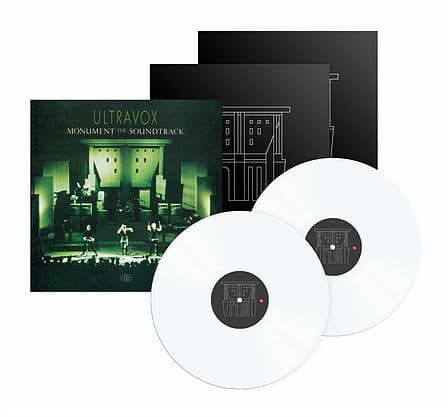
Ultravox
Title: Rage in Eden
Label: Vinyl 180
Title: Monument The Soundtrack
Label: Vinyl180
Title: Quartet
Label: Vinyl180
There’s a few of them out there: Gabriel or Collins-era Genesis? Ozzy or Dio-era Sabbath? Gillan or Coverdale-era Deep Purple? You could say the same about Ultravox, originally fronted by John Foxx, who left after the band’s third LP, Systems of Romance (1978), failed to catch fire commercially. Foxx began a successful solo career and was replaced by ex-Slik/Rich Kids man, Midge Ure.
Foxx was seen by many as the cool one, a touch aloof, very post punk and a master of sparse beats and experimental rhythms. Non-corporate in his artistic approach, Foxx was also the free spirit. The man who created, through a violent empathy, through a reactive sensitivity and through a creative will. You know the sort of approach. My way or no way. A dominant figure.
Ultravox drummer, Warren Cann, confirmed the character trait as the Foxx period drew to its conclusion, “Personalities were clashing on a regular basis. Just being in the same room was becoming more and more difficult. By the time we were wrapping up our first American tour, tempers were frayed and it only took a spark, at the end of our last gig in San Francisco, to set us off. When I joined the band I was under the impression it was an egalitarian group. As time went on, I saw that was certainly not the case. It proved in practise to be only a case of being equal when it suited the situation. It placed one in a serious dilemma; how do you resolve a situation where you’ve put so much work into something but your only option appears to be to leave? John was believing his own press and becoming too megalomaniac to effectively collaborate with. ”
From Foxx’s perspective, as he told Gary Numan, of all people, “I wanted to take chances with electronics. Try to devise a sort of practical adventurous language from drum machine, pop music, synthesizers and all the movies I had in my head. You couldn’t ask a band to hang around while you chanced everything on a single move like that. Meanwhile the band wanted and needed success, so it seemed logical to split and for each to pursue their own vision. I gave them the name, switched on the drum machine and we both got what we wanted.”
As for the rest of the band? They were, as drummer Warren Cann, explained, “…pissed off. The music press ignored Chris, Billy and I in favour of John. We had no record deal and we’d lost our lead guitarist, Robin Simon, to the attractions of New York. Island Records had never really known what to make of us and I believe they’d already been set to drop us, irrespective of John leaving (moot point: he left us/we left him). The last album with John, Systems of Romance, was one I was very proud of. Yet more than that, I knew it was a tantalising harbinger of things to come and that we were just on the verge of achieving a breakthrough to… well, I didn’t know to what… but I knew it was going to be great. The interruption was maddening.”
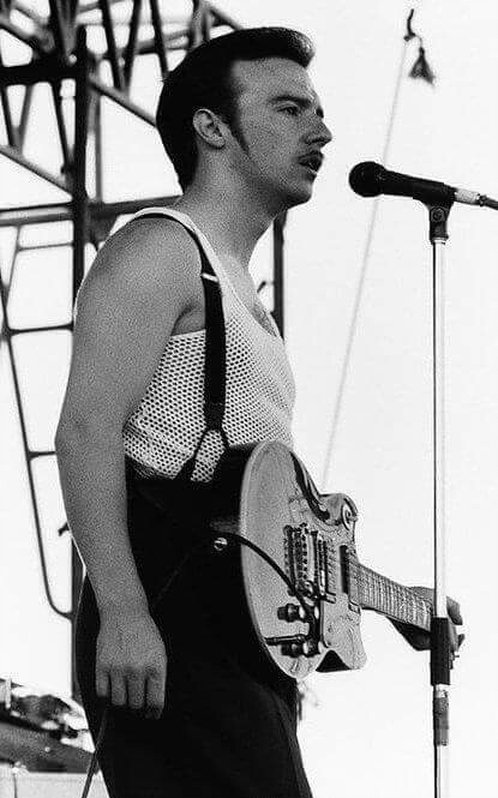
So the hunt for a new leader was underway and Midge Ure was noticed by Ultravox keyboard man, Billy Currie as both he and Ure also worked with the new romantic outfit, Visage. As Cann explained, “We met Midge and immediately went to the pub. He was very keen to do something substantial and liked what we were into.
“Once we’d had a play together it went well, so, we decided to go for it and see what happened. With no disrespect to John Foxx, Midge was a real singer, as opposed to someone who shouted with attitude. One’s voice isn’t like playing an instrument where you can practise and practise and gain the motor-skills and vocabulary through repetition. There’s only so much you can do with your voice, no matter how much you practise. To be a great singer, you have to be gifted the raw talent to begin with.
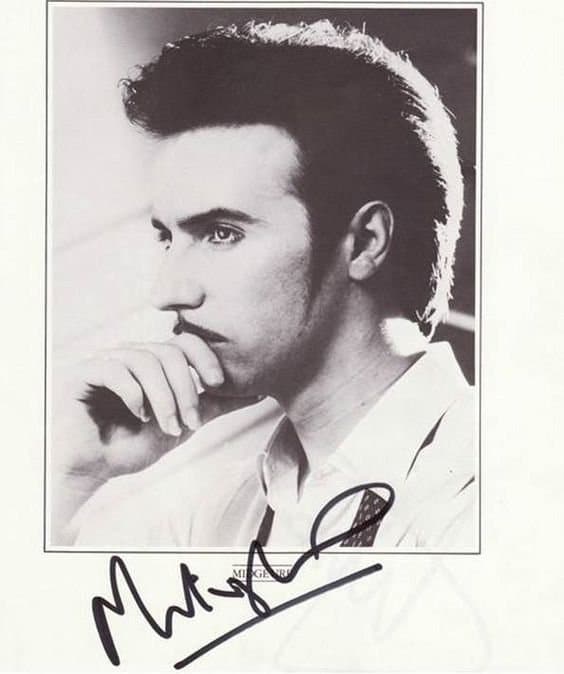
“I must also add that (Ure’s) guitar playing was a joy to play to. My background had given me many experiences of working with good guitarists, as well as being lucky enough to encounter a few truly great ones. They’ve never become household names but they were world-class players.”
As for Ure? Ultravox seemed, from the outside looking in, like a Saturday job. He was working with Visage and Ultravox while popping up in the middle of Thin Lizzy (I kid you not) and… well, you get the idea. I suppose the rest of the band saw Ure as a bit of a meal ticket, in the nicest possible way. Ure had already tasted success with Visage. Maybe he could be a commercial saviour? They certainly hoped so, they already owed a hell of a lot of money.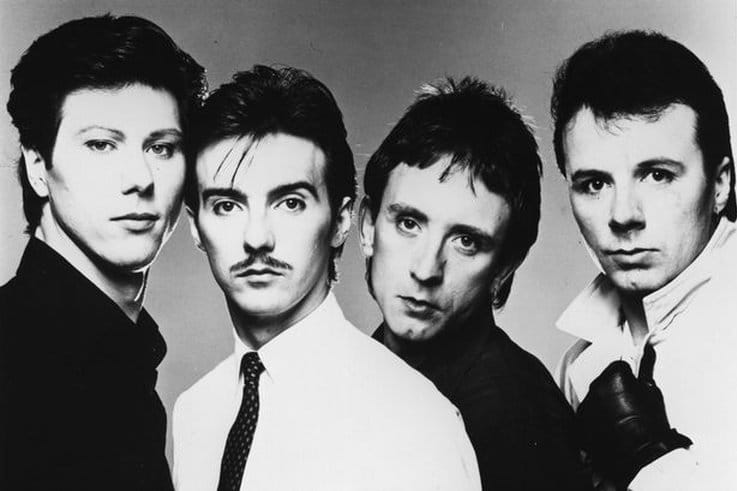
“It was a great period for me and the most exciting thing I’d ever done,” said Ure. “The idea of combining electronics with traditional rock instruments and classical instruments to make this noise that nobody else was making was fantastic.”
Ure had to settle into the Ultravox band in the full glare of publicity. He also had to wrench respect from a fan base who just waved goodbye to their beloved frontman. The Ure pencil moustache and Captain Kirk-esque, pointy sideburns didn’t help. I preferred him without the facial hair but he seemed to grow it to achieve instant maturity and a sense of self worth and seriousness. As a means, if you will, of not looking like a 12 year old. Whereas, to many and to me, he looked like a 12 year old with a moustache.
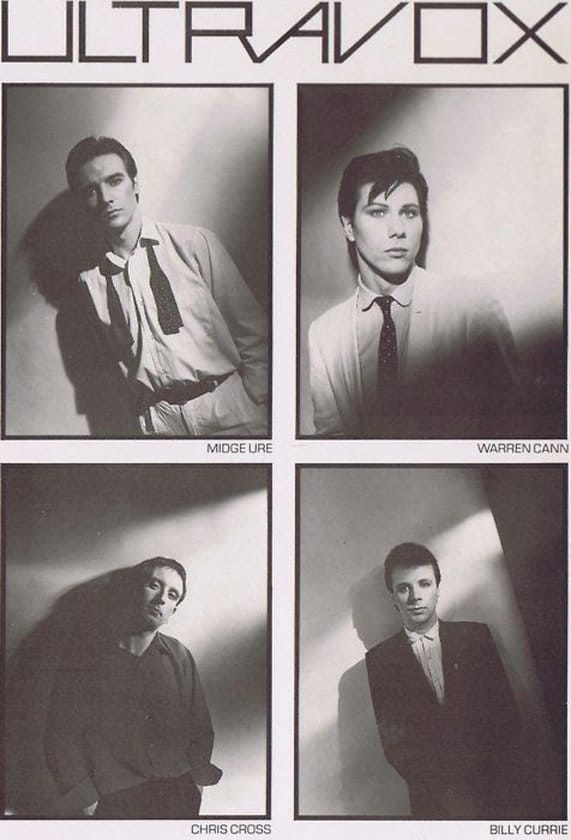
Of course, Ure was much more than that. More than the image and the frivolities and the tactical facial hair. This was a serious musician, an artist who wrote his own songs, was bursting with creative ideas, knew the market, was actually a savvy player and recognised how the music machine worked and yearned to take this band down a pathway that he forged, that he pioneered and that he controlled. Ultravox was a completely different animal under Ure. Ultra-Foxx had gone for good. Ure wanted commercial success. Where Foxx juggled ideas relating to art and whether this or that idea was worthy, Ure talked in corporate-friendly tones. He even created music videos that lampooned Indiana Jones. Can you even imagine John Foxx running through a forest, toting a machete and pausing the (Loves Great Adventure) video in mid-flow to take a breather? I mean, really?
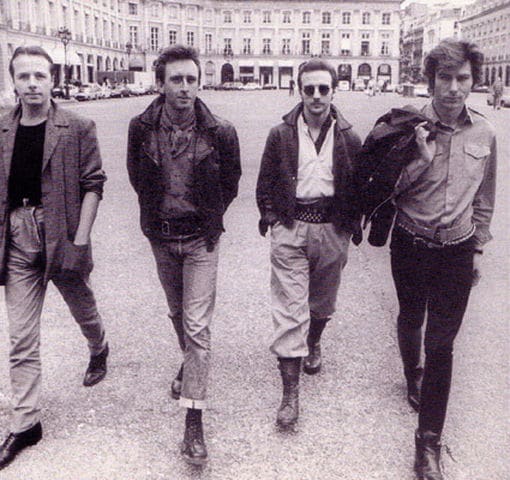
Sitting in a decaying Vienna cafe, sipping an empresso, bedecked in a thin tie with thin jacket lapels looking slightly perturbed through his eye make-up at Kierkegaard and Sartre arguing the finer points of existentialism. That would be a Foxx video.
Ure wanted to the the best. To succeed. To win. And he did (and that particular video was symbolic).
After the highly successful Vienna (review to follow and an album that said everthing about the Ure philisophy) under this re-jigged line-up, the next LP to be issued by the group was Rage in Eden (1981) featuring The Thin Wall and The Voice as singles.
In fact, opening the LP with The Voice was quite a splash and set a precedent to what was to come with We Stand Alone and I Remember (Death in the Afternoon) acting as a forthright duo.
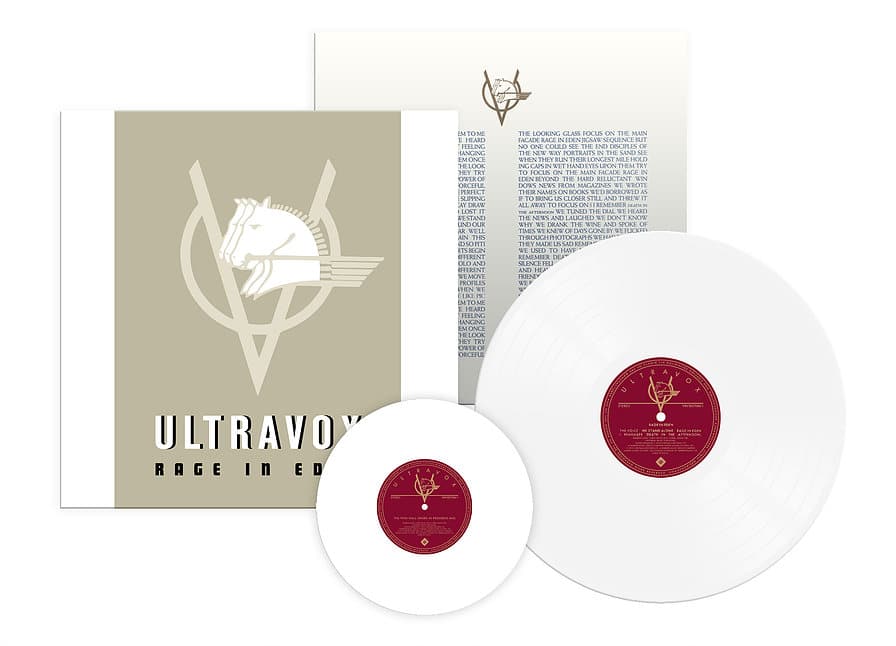
This was post punk, new wave, electro pop. But it was also prog under a disguised banner because one of the highlights of this and other Ure-fronted Ultravox albums was the band’s willingness to extend the songs with long, confident instrumental tails that added an extra dimension to the tracks and gave the music an added rhythmic power. But don’t kid yourself, it was prog. Electro prog but prog, nevertheless. It said, ‘We love Kraftwerk, but look at us grooving to the beat. Sitting on it. Tweaking it. Extending it. Sod The Ramones. This is a groove to live in.”
“For Rage we didn’t prepare anything,” said Cann. “Roughly, we spent about a month doing all the loony things we’d always wanted to do in a studio. Then a month coalescing it all into songs, and then about a month or so trying to wrangle mixes out of it. Nearly drove us mad. Or perhaps that was just spending so much time out at Conny Plank’s studio in the German countryside.
“It was the hardest record we’d ever made. Rather than use the success of Vienna to churn out Vienna Mk.II, we capitalised upon that success to climb further out on a limb than we’d ever done before. We wanted to conceive and produce a record entirely within the studio. We’d always wanted to do it but, when time is so much money, we’d always go into a new record’s sessions well prepared with our material mostly worked out in advance. We were extremely proud of the finished result. We did decide, however, to not go down that particular avenue again in a hurry. The merits of pure spur-of-the-moment inspiration aside, having at least a framework of material to flesh out once in the actual studio was something we were more comfortable with.”
For audiophiles, the mastering on this album is rather lovely. On the punchy, dramatic, oh so helpless song, The Thin Wall, the pressing is quiet with an appealing clarity. Percussion is meaty and punchy while Ure’s vocal delivery is clear and emotive. One of the aural highlights was being being able to clearly hear the Ure rhythm guitar on the right channel and, more than that, to easily follow the rhythm line without any effort.
This edition arrives on white vinyl with a bonus 7” single featuring ‘work in progress’ mixes of The Thin Wall and Stranger Within.
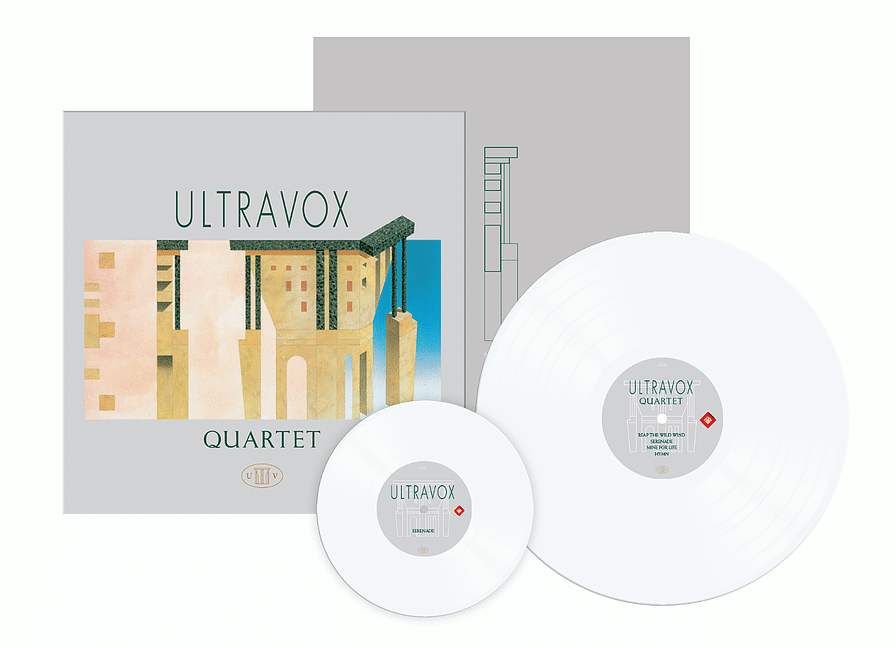
Released in 1982, Quartet was notable for its hit songs Reap the Wild Wind and Hymn (the latter a legacy of Ure’s last band, the Zones, a post punk outfit that had the pleasure of recording a session for BBC Radio 1 DJ John Peel, I believe). Two more hit singles followed on the flip of Quartet, starting with Visions in Blue and, stuck halfway down the B side, the preening We Came To Dance, that became a much loved release and focused on the contemporary fashion victims of the times (and there were plenty of those, let me tell you). Although there are upbeat and high-tempo songs here, there are also dark themed ditties on offer too that act as a counter-balance, creating a more thoughtful release.
The album, “…took a long time to do,” said Ure. “We spent quite a bit of time in Air Studios in London and it was great, it was a very different experience again.”
Currie agreed, he also marvelled at the organised nature of the LP’s creation and the producer for the album, George Martin’s involvement, “He came up a few times to see how we were doing writing the material and when we went in, it was more set. We did it in a set amount of time – I think only four weeks in Air Studios, then we went over to Montserrat to finish it off.”
Cann added that, as a professional endeavour, the album hit a career high. He was irritated though, “I wasn’t disappointed with the album but I was very disappointed with a certain element that criticised us for using George Martin. They completely misunderstood. They saw it as being safe and conservative and thought we’d sold out by going dull and commercial and we just scratched our heads at that. This man recorded ‘Sgt. Pepper’ – he was the most ground-breaking producer ever.”
In audiophile terms, Quartet is slightly more forward in terms of the upper frequencies, than Rage in Eden. There’s a tad more compression during playback – no doubt resident within the original mix – that may have been applied to enhance it commercial impact on radio. Nevertheless, Vinyl180 has done a good job in taming the sound as is never bites your ears during play. In fact, listening at high volumes is entirely possible without listening fatigue setting in.
Pressed on 180g white vinyl, the package arrives with a 7” white vinyl single, featuring the single edit of Serenade and fanclub Flexi disc live version of The Voice.
Finally, in this suite of vinyl reviews, Monument was originally released in 1983 as a six-track mini-album. Recorded at London’s Hammersmith Odeon in December 1982, the 2LP album opens with the title track which sits on the begining of the album as a lie because, perversely, it is not live at all but a studio recording: it was originally the B-side to the Hymn single. Why is it here at all? Does its presence expose a lack of confidence? A lack of live content? A rush job? Confusion?
Originally, listening to the title track, I was struck and little shocked, to tell you the truth. It offered a fierce, dramatic, dark, almost industrial flavoured instrumental and sounded quite unlike their contemporary synth pop-oriented album fare. Then I realised that I’d ‘done a John Peel’ and had played this 45rpm vinyl disc at 33rpm. Sigh.
Nevertheless, I encourage you to do the same, it’s a brilliant track at 33! Its still good at 45rpm, though but does stand out like a sore thumb in amongst the live set.
The eventual live set leads with Reap The Wild Wind and then Visions In Blue. Side 2 opens with The Voice and Vienna while the second disc produces Passing Strangers, Mine For Life, Hymn and The Song (We Go).
This is an excellent overall production. OK, in audiophile terms, it loses a lot of sonic quality during the live offerings but does gain in musicality and atmosphere mainly because the band are right up for this show and are bristling with energy.
This LP includes newly designed artwork plus ‘a’ sleeve photo from Midge Ure’s personal archive. Should we be grateful? It seems a little half-hearted. I would have appreciated more rarities too.
Overall? Ultravox fans will appreciate the bonus rarities but the main reason to buy is the enhanced mastering: these albums have never sounded better.
To buy, contact: www.vinyl180.com



Hi Paul,
I’m writing to you because i saw that you have a copyrighted photo of mine which is on your website. The photo in question is the photo of midge in the singlet, live on stage. that photo actually belongs to and was given to me by the professional photographer who attended that concert and took that photo. Could I please ask you to add his name to the bottom of the photo please? his name is Michael Skinner. if it’s okay, could you please put ¬© Michael Skinner. Thank you. If there are any other questions, you can email me at the email attached. Thank you for Paul.
Not a problem, Toni – pleasure to oblige. I receive images from a variety of sources and I’m sure that they’ve often passed through many hands…one of the problems of the digital medium, no doubt. If I can correctly attribute them (or pull them totally if that is the wish) then I’m more than happy to do that.